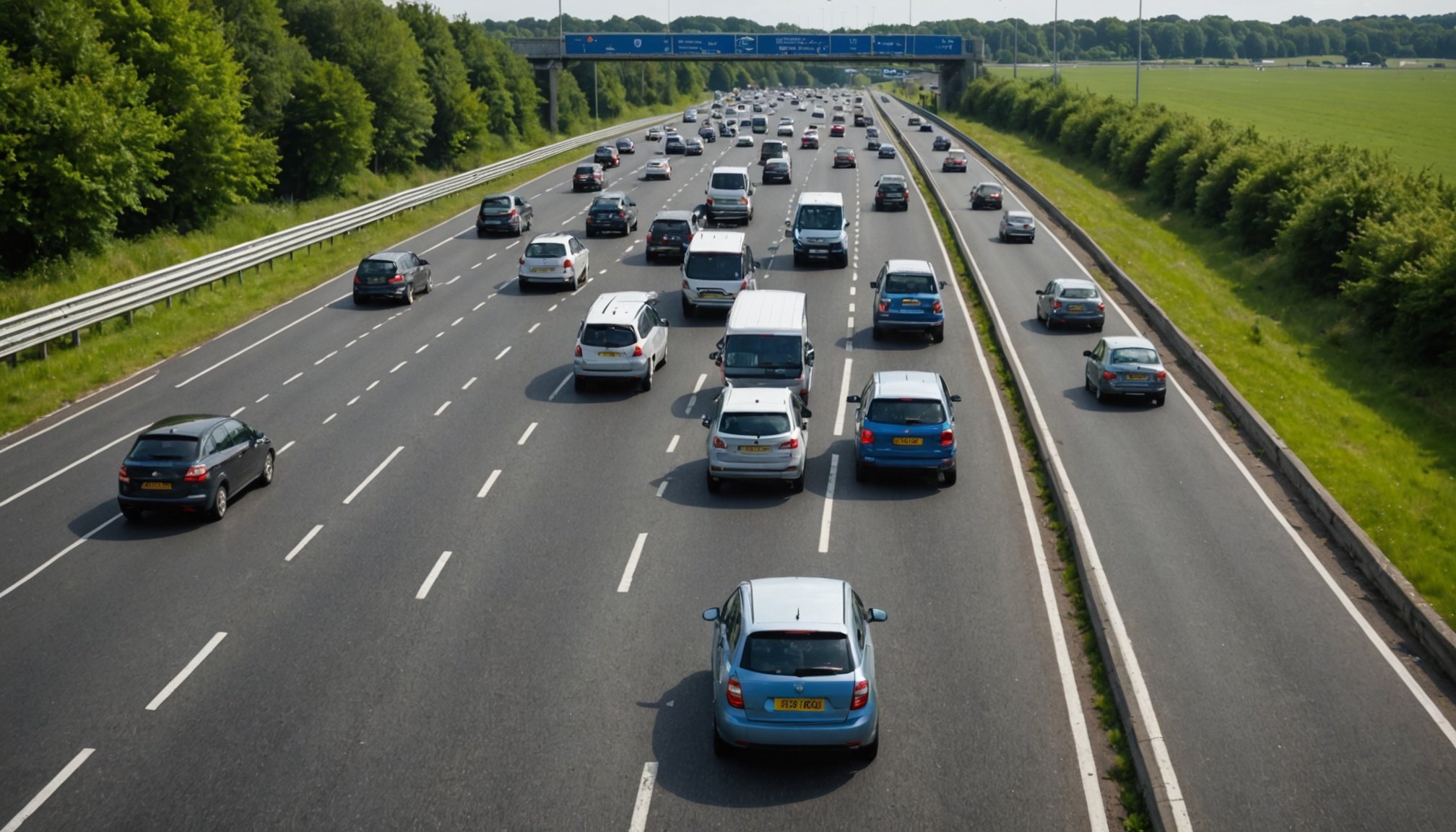Understanding Road Rage
Road rage is a phenomenon characterised by aggressive driving due to emotional triggers. Drivers may experience anger or frustration on the road, leading to hostile behaviours. These can manifest as gestures, verbal insults, or even dangerous driving tactics. Understanding the psychology behind road rage involves acknowledging that it often stems from stress, impatience, or personal issues that are exacerbated while driving.
Statistics highlight the prevalence of road rage incidents in the UK, with a significant number of drivers admitting to aggressive driving or having been victims of it. This reflects widespread emotional triggers during commutes. Often, factors like traffic congestion, running late, or perception of poor driving skills in others can spark aggressive responses.
Have you seen this : Essential strategies to protect your convertible from the uk”s rainy weather
Common scenarios that trigger road rage include:
- Being cut off by another driver
- Tailgating or being tailgated
- Witnessing another driver using a mobile phone
These situations can feel threatening or disrespectful, often fuelling an emotional reaction. To promote road rage awareness, recognising these triggers and understanding personal reactions can be vital steps towards reducing incidents. Awareness initiatives aim to educate and encourage drivers to maintain calm and adopt safer practices despite aggravating factors.
Have you seen this : Unlocking maximum fuel economy: essential driving strategies for uk motorway adventures
Practical Strategies to Manage Road Rage
Managing road rage effectively requires adopting coping techniques and implementing calming strategies. By understanding and practising these methods, drivers can better handle emotional triggers and promote a safer driving environment.
Deep Breathing and Relaxation Techniques
Deep breathing can be a simple yet powerful road rage management tool. When faced with agitation, taking deep breaths helps reduce stress instantly. A technique like the “4-7-8” method—inhale for 4 seconds, hold for 7, and exhale for 8—can be calming. Relaxation exercises can complement breathing, reducing tension while driving.
Positive Self-Talk
Engaging in positive self-talk helps reshape how drivers react to situations. Reminding oneself that “everyone makes mistakes” or “this delay won’t ruin my day” can keep aggression in check. By focusing on constructive thoughts, drivers can prevent escalation and remain composed.
Mindfulness During Driving
Incorporating mindfulness aids in maintaining focus. Mindfulness exercises, such as paying attention to surroundings and being aware of one’s thoughts, can enhance driving experience. Setting personal driving goals, like aiming for peaceful commutes, encourages a positive mindset, helping to counteract road rage tendencies.
Interacting with Aggressive Drivers
Navigating interactions with aggressive drivers requires dealing with aggressive drivers through strategic communication tactics and defensive driving. The goal is to maintain safety without escalating the situation. One best practice is to avoid eye contact, which can prevent escalation and help keep tempers in check. Adjust your reaction to emphasize calmness and restraint. Non-verbal cues such as keeping a relaxed posture while driving also convey non-aggression.
Communication tactics are essential. Use your indicators and hazards appropriately not only to inform but also to diffuse tension. This signals intent and helps foster a predictable driving environment. By doing so, it reduces the chance of misunderstandings on the road.
While interaction is inevitable, maintaining a safe distance is critical. Defensive driving allows you to protect yourself by anticipating potential erratic driving behaviours from others. This involves keeping extra space between your car and the aggressive driver’s vehicle, allowing room to react if needed. If pursued or threatened, prioritising your safety by finding a public, well-lit area is prudent.
Ultimately, employing these strategies promotes a safe driving experience by reducing the potential for confrontations and fostering a peaceful commute.
Legal Aspects of Road Rage
Navigating road rage doesn’t just require personal strategies; it also involves understanding the legal consequences tied to such behaviour. In the UK, road rage is taken seriously with specific road rage laws in place. Aggressive driving can lead to penalties like fines, disqualification, or even imprisonment, depending on the incident’s severity and its impact on other road users.
Understanding the Legal Framework
The UK driving regulations serve as a framework to uphold safety and order. Aggressive driving might fall under various offence categories, such as dangerous driving or public disorder. Recognising these offences helps drivers understand the consequences of their actions and the importance of keeping their emotions in check.
Reporting Aggressive Driving
Witnessing aggressive driving can be daunting, yet knowing how to safely report such drivers is crucial. Drivers are encouraged to note essential details like vehicle registration and location before contacting the police. This ensures action against aggressive drivers doesn’t compromise personal safety.
Rights and Responsibilities of Drivers
Understanding one’s rights and responsibilities forms a vital part of road rage awareness. Drivers have a responsibility to the safety of themselves and others, which includes abiding by traffic rules and regulations. Awareness of rights ensures a fair response if involved in or witness to road rage incidents.
The Role of Mental Health in Driving
Emotional well-being significantly impacts one’s driving behaviour. Stress management becomes essential as it directly influences how drivers respond to road conditions and fellow motorists. Anxiety and stress can act as catalysts for aggressive driving, escalating road rage incidents. Recognising these factors can help in curtailing such behaviours effectively.
Addressing personal triggers tied to one’s mental health can foster emotional resilience. Identifying and managing these triggers underpin good driving etiquette, promoting patience and understanding among drivers. By staying aware of emotional states, individuals can practice techniques to temper their reactions.
Therapy and counselling are excellent avenues for those struggling with aggression. These therapeutic options offer strategies to deal with underlying issues contributing to road rage. Cognitive-behavioural therapy, for example, can help in modifying thought patterns and enhancing stress management techniques.
Investing in psychological well-being not only improves personal life quality but also contributes to safer roads. One should make use of available resources, like group therapy sessions or mindfulness workshops, which are designed to aid in emotional management. On a wider scale, promoting mental health awareness sets a positive precedent for others, encouraging a culture of responsible and considerate driving.
Personal Anecdotes and Case Studies
Exploring personal experiences and road rage stories offers valuable insight into managing aggression on the road. Success stories show how drivers effectively neutralise anger by implementing practical strategies. A notable case involved a driver who embraced mindfulness and relaxation exercises, transforming their commutes into stress-free journeys. By taking a few moments to breathe deeply at each red light, they significantly reduced their aggressive reactions.
Success Stories of Overcoming Road Rage
Individuals who overcame road rage not only inspire others but prove that behavioural change is possible. For instance, a frequent commuter who practiced positive self-talk reported feeling calmer, reducing stress and frustration. These experiences highlight how adopting simple mind shifts can enhance one’s driving experience.
Lessons Learned from Road Rage Incidents
Analysing various responses to road aggression, it’s clear that exercising restraint often prevents escalation. Recognising personal triggers allows drivers to pause before reacting. One compelling account described how understanding the emotional catalyst led to peace and improved road rage management.
Community Initiatives to Promote Safe Driving
Communities create programs to promote responsible driving. Campaigns focus on road rage awareness through workshops and support groups. These initiatives not only educate but foster solidarity among drivers, encouraging a culture of calmness and road safety.
Resources for Further Learning
To gain a deeper understanding and continue enhancing your road safety skills, several driving education resources are available. These resources focus on techniques for conflict resolution and managing road rage.
-
Books and Articles: Numerous publications address road rage management and conflict resolution. They provide insights into recognising personal triggers and applying effective techniques for emotional control.
-
Online Courses and Workshops: Participating in virtual learning can significantly boost your driving education. Several platforms offer courses tailored to safe driving practices, helping drivers manage stress and avoid aggressive situations.
-
Local Organizations and Support Groups: Engaging with community-based initiatives offers practical, real-world support. Local programmes often conduct workshops and awareness campaigns aimed at promoting road safety. These groups provide a space for sharing experiences and learning from others.
By exploring these educational avenues, drivers can become better equipped to handle road rage effectively, ultimately contributing to safer roads for all. Taking advantage of these resources ensures continued learning and promotes a supportive network for those facing challenges related to driving aggression.











